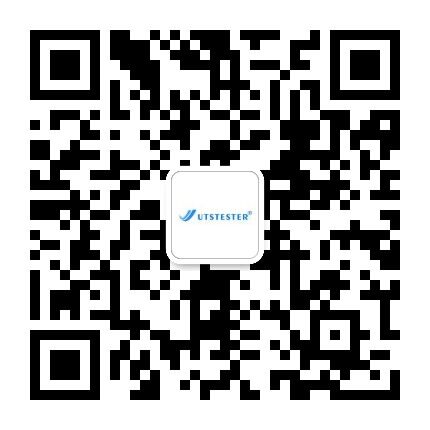
How is tensile strength determined?
Tensile testing, also called tensile testing, is a fundamental material science and engineering test in which a sample is subjected to controlled tension until it fails. The properties directly measured by the tensile test are ultimate tensile strength, breaking strength, maximum elongation and area reduction. From these measurements, the following properties can also be determined: Young's modulus, Poisson's ratio, yield strength, and strain hardening properties. Uniaxial tensile testing is most commonly used to obtain the mechanical properties of isotropic materials. Some materials use biaxial tensile testing. The main difference between these testing machines is how the load is applied to the material.
What is the standard for tensile test?
For different materials, there are many International and domestic test standards for manufacturer or third party test lab performing. Below is some regular test standards for textile tensile strength test.
|
Item
|
No.
|
Standard
|
Standard Name
|
Speed
mm/min
|
Clamp distance
(mm)
|
Sample size
(W×L)mm
|
|
China Standard
|
|
Yarn
|
1
2
|
GB/T 3916
FZ/T 50007
|
Determination of breaking strength and breaking elongation of single yarn.
Test method for elasticity of spandex yarn
|
500
50
|
500
500
|
≥500
≥500
|
|
Garment
|
3
4
5
|
FZ/T 80007.1
FZ/T 20019
FZ/T 70007
|
Test method for peel strength of clothing using adhesive interlining
Test method for degree of detachment of wool woven fabric
Test method for the strength of the underarm seams of knitted tops
|
100
50
200
|
50
≥75
100
|
25×150
100×175
According to standard
|
|
Fabric material
|
6
7
8
9
10
11
12
13
14
15
16
17
18
|
GB/T 3923.1
GB/T 3923.1
GB/T 3923.2
GB/T 3917.2
GB/T 3917.3
GB/T 3917.4
GB/T 3917.5
FZ/T 01030
FZ/T 70006
GB/T 13772.1
GB/T 13772.2
GB/T 13772.3
FZ/T 01031
|
Determination of breaking strength and breaking elongation (strip method)
Determination of breaking strength and breaking elongation (strip method)
Determination of breaking strength (grab sample method)
Determination of the tearing strength of trouser-shaped specimens (single seam)
Determination of the tearing strength of trapezoidal specimens
Determination of the tearing strength of tongue-shaped specimens (double slits)
Determination of tear strength of single seam of wing-shaped specimen
Determination of seam strength and expansion of knitted fabrics and elastic woven fabrics
Ball burst method
Test method for tensile elastic recovery rate of knitted fabrics
Determination of yarn slip resistance at seams of woven fabrics. Fixed slip method
Determination of yarn slip resistance at seams of woven fabrics
Determination of yarn slip resistance at seams of woven fabrics. Needle clamp method
Determination of seam strength and elongation of knitted fabrics and elastic woven fabrics. Grab sample stretch method
|
20
100
50
100
100
100
100
100
100
50
50
50
300
|
100
200
100
100
25
100
100
/
100
100
100
100
75
|
50×200
50×200
100×200
50×200
75×150
150×220
100×200
≥Φ65
50×100
100×400
100×200
60×300
100×150
|
|
Geotextile
|
19
20
21
22
|
GB/T 15788
GB/T 13763
GB/T 14800
GB/T 16989
|
Wide strip tensile test of geotextile and related products
Geosynthetics-Determination of tearing strength by trapezoidal method
Geosynthetics static burst test (CBR method)
Geosynthetics-Method for tensile test of wide strips of joints
|
20
50
50
20
|
100
25
/
100+
|
200×200
75×200
≥Φ150
200×150
|
|
Zipper
|
23
|
QB/T 2171
|
Metal zippers Comprehensive strength test items for zippers
|
300
|
/
|
/
|
|
US Standard
|
|
Fabrics
|
24
26
27
28
29
30
|
ASTM D5035
ASTM D5034
ASTM D2261
ASTM D5587
ASTM D1683
ASTM D4964
|
Test method for breaking strength and elongation of textile fabrics (strip method)
Test method for breaking strength and elongation of textile fabrics (grab sample method)
Standard Test Method for Tearing Strength of Fabrics Tongue Method
Standard Test Method for Tearing Strength of Fabrics Trapezoid Method
Standard Test Method for Cracking at Seams of Woven Garment Fabrics
Stretching and elongation testing of stretch fabrics
|
300
300
50/300
300
305
500
|
75
75
75
25
75
250
|
25×150
100×150
75×200
75×150
100×350
100×350
|
|
Britain Standard
|
|
Fabrics
|
31
32
|
BS EN ISO 13934.1
BS EN ISO 13934.2
|
Determination of breaking strength and breaking elongation by strip method
Test breaking strength and breaking elongation with sample grab method
|
100
50
|
200
100
|
50×200
100×200
|
How do you perform a tensile test?
Test procedure:
1. Cut or inject the test material into a specified shape with a determined length and cross-sectional area.
1. Load the sample between two clamps called "fixtures" to clamp the material.
2. Separate the tensile fixture at a constant speed to start the test. By applying weight to the material clamped at one end, the other end is fixed.
3. End the test after the sample is broken (rupture)
What does a tensile test tell you?
Tensile testing is a destructive test process that provides information about the tensile strength, yield strength, and ductility of the metallic material. It measures the force required to break a composite or plastic specimen and the extent to which the specimen stretches or elongates to that breaking point.
Why do we use tensile test?
It is used to find out how strong a material is and also how much it can be stretched before it breaks. This means that tensile testing helps guarantee the safety of a material.
How do I choose a universal testing machine?
When consulting your testing application, there are four main areas that we focus on:
a) Sample Material
b) Test Type
c) Testing Standard
d) Capacity
1. ASTM and ISO requirements: One of the first factors to consider when purchasing UTM is to determine the standards required for testing materials. When selecting test equipment, test standards usually play an important role, because most standards include recommended or required equipment and fixtures. The standard also specifies the details of the test, such as preload, speed, and distance between fixtures. These requirements vary, and it is important to understand what type of testing a material must go through.
2. Materials to be tested: A universal testing machine can be used to test a very wide range of materials. Material type, weight and size play an important role in determining the testing machine that suits your needs. UTSTESTER machines can test various materials, including fabrics, yarns, fibers, rubber, metals, plastics, etc.
3. Maximum load capacity: The universal testing machine is usually selected according to the maximum load required for testing. There are a range of different machines to choose from, including desktop, electromechanical, hydraulic, etc. The load capacity ultimately determines the size of the machine. At UTSTESTER, we advise customers based on their unique testing requirements.
4.Type of test: One of the main factors to consider before buying a universal testing machine is to understand the type of test you want to perform. UTSTESTER's machines are highly customizable and can perform a series of tests, including tension, compression, torsion, bending, etc. Explore our full range of universal testing machines here.
5. All tests, one machine: It is not enough to just choose a suitable universal testing machine. You must also critically consider its future and the range of materials it can be used for. For example, you may need a tensile testing machine today, but you may want to use it for compression or bending tests in the future. By considering all current and future requirements, in the long run, you will be able to reduce costs by purchasing a truly "universal" testing machine.
Looking for a tensile strength tester? Learn more about our tensile testers here.

 en
en ru
ru es
es pt
pt ar
ar








 IPv6 network supported
IPv6 network supported online service
online service



